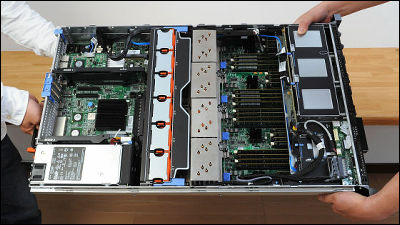A Twitter engineer who developed a supercomputer gently without idle time

CheaplyOpen source project capable of making supercomputersAlthough Twitter engineer Brian Grassy has developed a supercomputer using everyday spare time and has been developing a world famous supercomputer "Cray-1"When"Connection machine"And the real machine and details under development which was inspired by Mac Pro are released.
My Name is Brian and I Build Supercomputers in My Spare Time | Parallella
http://www.parallella.org/2014/06/03/my-name-is-brian-and-i-build-supercomputers-in-my-spare-time/
Mr. Brian uses a free time to build a general-purpose computing cluster with low power consumption. The Parallella board is excellent in computing capacity but relatively limited in storage capacity and memory, so Brian has two IntelNext Unit of Computing (NUC)Add. NUC isIntel Core i 3And 16 GB RAM, 120 GB SSD, 802.11 ac WiFi, and it is extremely low power consumption design.
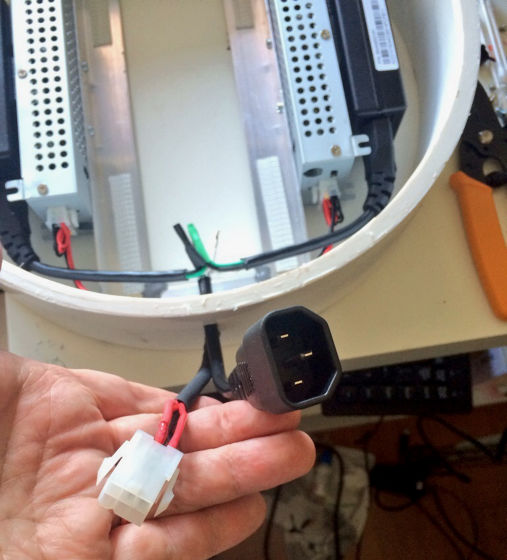
NUC implements the main interface to Ubuntu server storage host · external world. The system has 8 Parallella boardsGigabit EthernetShared on the switch, up to 208GFLOPSPerformance is demonstrated.
The idea of physical design was inspired by two internationally famous Supercomputers and Mac Pro called Cray-1 and Connection Machine. With a height of 16 inches (about 40.6 cm), a diameter of 12 inches (about 30.5 cm), a base height of 3 inches (about 7.6 cm), the appearance of the eight Parallella boards cooling efficiently Tower type. In addition, power transformer · NUC 2 units · Gigabit · Ethernet switch · Arduino · LED strip are installed.

8 cooling booths outside the cooling towerAdafruit NeoPixel LED stripThe exterior fitted with comes from the spirit of the connection machine. The two NUCs inside use a 19 V power supply and the external power supply uses 180 W 12 V power supply, so the system has three transformers. Estimated power consumption is 30 W × 2 (NUC) + 5 W × 8 (Parallella) + 20 W (LED) with an average of 120 W.
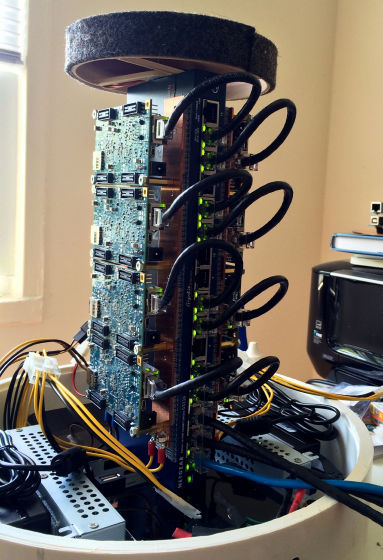
It is 12 inches (about 30.5 cm) × 3 inches (about 7.6 cm) in the base, 13 inches (about 33 cm) × 6 inches (about 15.2 cm) in the cooling towerPVC tubeIs used, and a 140 mm fan is attached to the top. Aluminum rails inside the base and the towerUltra high heat resistant epoxy resinIs built in.
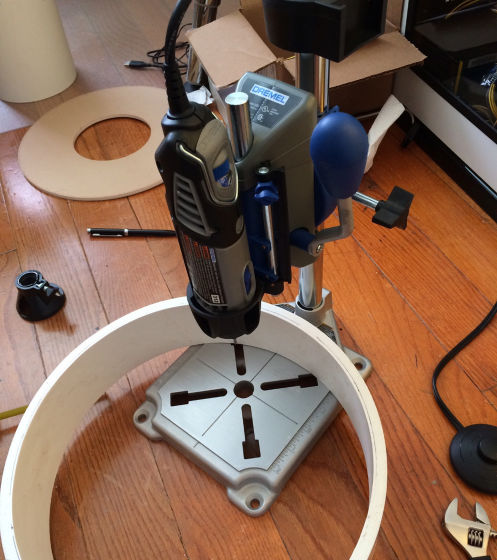
Two 19 V NUC bodies installed inside the base, transformer and DC-DC converter provide power to the Parallella board and LED. Brian said that he spent a lot of time on the space and airflow necessary to mount the Parellalla board. So, as a solution, use Gigabit Ethernet switch as a kind of "pillar". The Parallella board can be easily mounted, and we succeeded in saving various cable lengths and power supply.

On one side of the switchOxygen free copperFour Parallella boards are mounted by the generators of. Buses are fixed with industrial velcro, Molex'sConnector for electric wire to boardConnect to the power supply through.
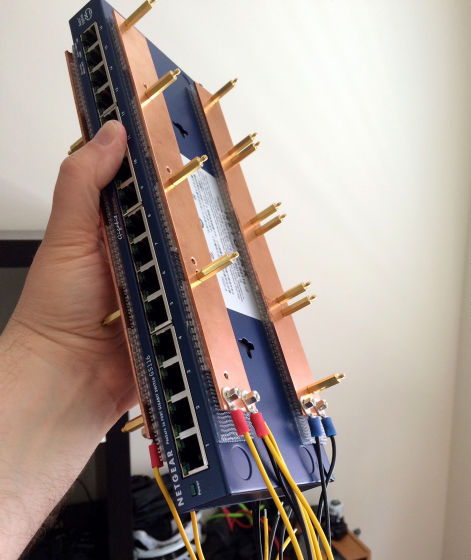
This supercomputer is "Parallac"The development is continued now using the free time. We are planning to have hardware extension in future and plan to build parallel computing applications, and all of the project will be documented after "parallac.org" has been established.
Related Posts:
in Hardware, Posted by darkhorse_log





